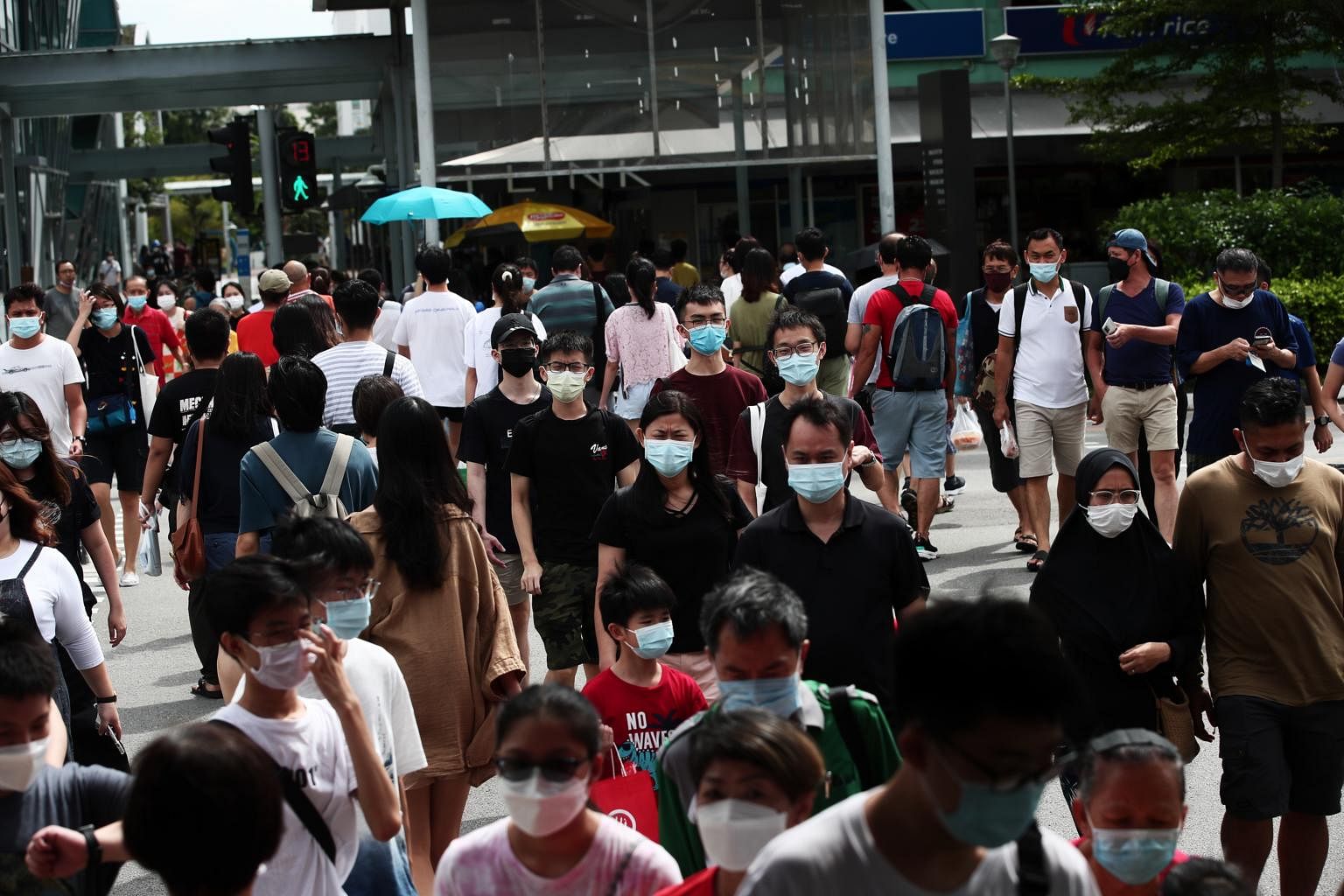Should you be worried about the new Omicron sub-variants detected in Singapore?
Sign up now: Get ST's newsletters delivered to your inbox

MOH will step up local surveillance efforts and continue monitoring the spread of BA.4 and BA.5 in Singapore.
ST PHOTO: KELVIN CHNG
Follow topic:
SINGAPORE - The increased transmissibility of the Omicron variant has seen the emergence of a number of sub-variants, with the Ministry of Health (MOH) on Sunday (May 15) announcing the first local cases of BA.4 and BA.5 detected in Singapore.
But experts say there is no cause for undue alarm.
The Straits Times answers some questions on what we know so far about these two new variants - BA.4 and BA.5.
Q: Why are there so many Omicron sub-variants?
A: Omicron has spread rapidly and this has given it many opportunities to mutate and also acquire specific mutations of its own.
Some of these sub-variants include BA.1, BA.2, BA.3, BA.4 and BA.5.
There have been sub-variants of earlier versions of the virus, such as the Delta variant. However, Omicron has overtaken these, most likely due to its increased transmissibility.
Q: Where have BA.4 and BA.5 been detected?
A: These sub-variants have been detected in more than a dozen countries, with higher rates of detection in South Africa.
Q: How many cases have been detected in Singapore?
A: On Sunday night, MOH said it found through active surveillance two cases of the BA.4 variant and one case of the BA.5 variant.
All three were either asymptomatic or had mild symptoms, and did not require hospitalisation. They were fully vaccinated and had received their booster doses.
MOH said it will step up local surveillance efforts and continue monitoring the spread of BA.4 and BA.5 in Singapore.
Q: Should we be worried?
A: There is some evidence that BA.4 and BA.5 are more effective at reinfecting people with previous infections from BA.1 or other lineages.
There is also concern these sub-variants may infect the vaccinated.
It is important that the evolving genetics of the Sars-CoV-2 virus be monitored so as to track disease severity, said Professor Dale Fisher, a senior infectious diseases consultant at the National University Hospital.
“Currently, these sub-variants look similar to the original Omicron variants although there are some added mutations which give it a growth advantage over early versions of Omicron. Hence, we are seeing BA.4 and BA.5 become more prevalent in South Africa, US and many European countries,” Prof Fisher explained.
“We are not sensing increased disease severity but this is critical to watch for.
“Coronaviruses will evolve constantly so this process of discovering new variants will be never-ending even after Covid-19 becomes truly endemic,” Prof Fisher said.
Associate Professor Alex Cook, vice-dean of research at the National University of Singapore’s Saw Swee Hock School of Public Health, echoed similar comments, saying that the discovery of these sub-variants are to be expected and new sub-variants will continue to be found and eventually lead to new waves, but this should not provoke undue alarm.
"We expect that future waves of Covid-19 will happen due to one of two things: Falling immunity, as protection wanes over time, and further mutation of the virus to forms which many are not immune to," Prof Cook said.
"However, the expectation is that even when immunity to infection with the dominant virus falls, the protection against severe disease should fall less, and so the health system should not be threatened in the way that the pandemic threatened in the first few waves.
"Unless the healthcare system is in jeopardy, it should not be that we need socially disruptive measures like we did in the last few years," Prof Cook added.
Based on information on MOH's website, the numbers of patients in hospital who needed oxygen supplementation or intensive care did not see major spikes in the past month, despite the relaxation of restrictions.


